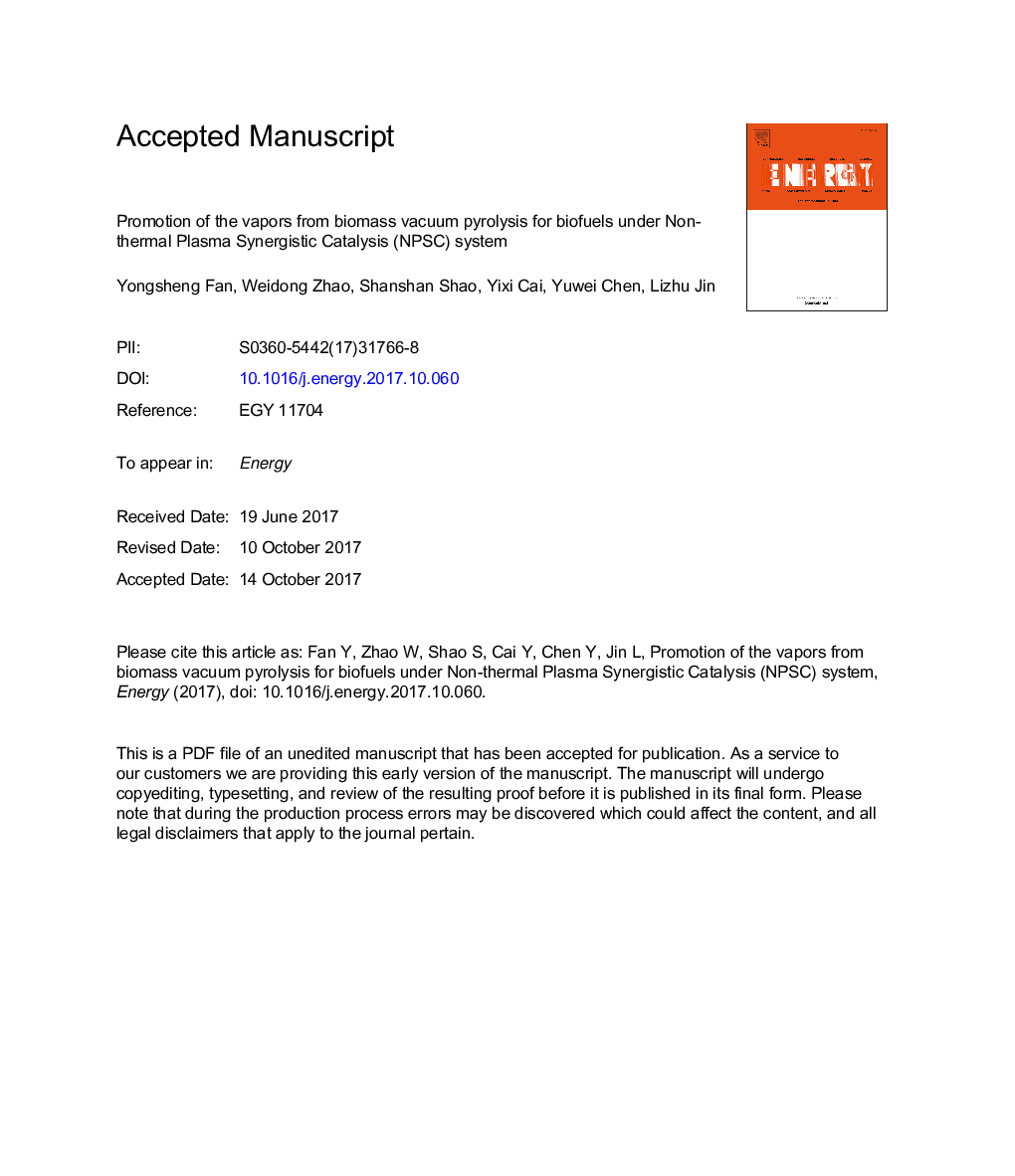| Article ID | Journal | Published Year | Pages | File Type |
|---|---|---|---|---|
| 8072518 | Energy | 2018 | 33 Pages |
Abstract
Non-thermal Plasma Synergistic Catalysis (NPSC) was firstly proposed and employed in the upgrading of biomass pyrolysis vapors for preparation of biofuels. The effects of the three-way catalysis (non-thermal plasma, HZSM-5 body and modified components) on the bio-oil upgrading performance and catalyst stability were comprehensively investigated. Bio-oil yields continued to decrease, but the physicochemical properties were further improved. The contents and compositions of hydrocarbons in bio-oil were increased and improved to varying degrees. The introduction of non-thermal plasma technology enhanced performance of cracking and deoxygenation for whole catalytic process. Besides, anti-coking performance of Zn/HZSM-5 was enhanced to a certain extent, but the multiple interactions significantly improved the cracking performance when Ti species introduced, increased the coke content, and an “isomorphism” phenomenon for two kinds of coke was emerged. In general, obtained biofuels still belonged to the hydrogen-deficient fuel, lower (H/C)eff of the vapors limited substantial improvement of the fuel grade.
Related Topics
Physical Sciences and Engineering
Energy
Energy (General)
Authors
Yongsheng Fan, Weidong Zhao, Shanshan Shao, Yixi Cai, Yuwei Chen, Lizhu Jin,
